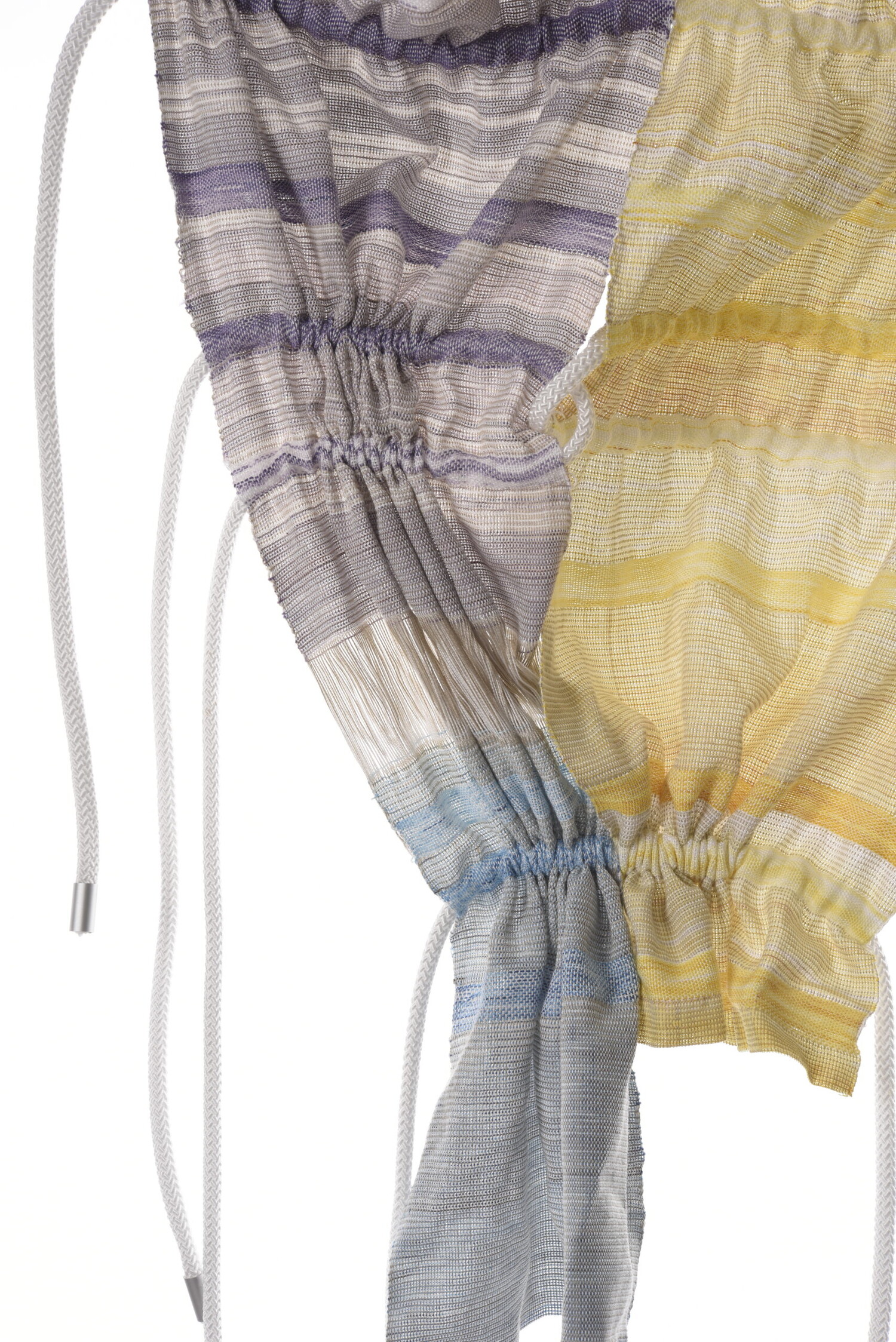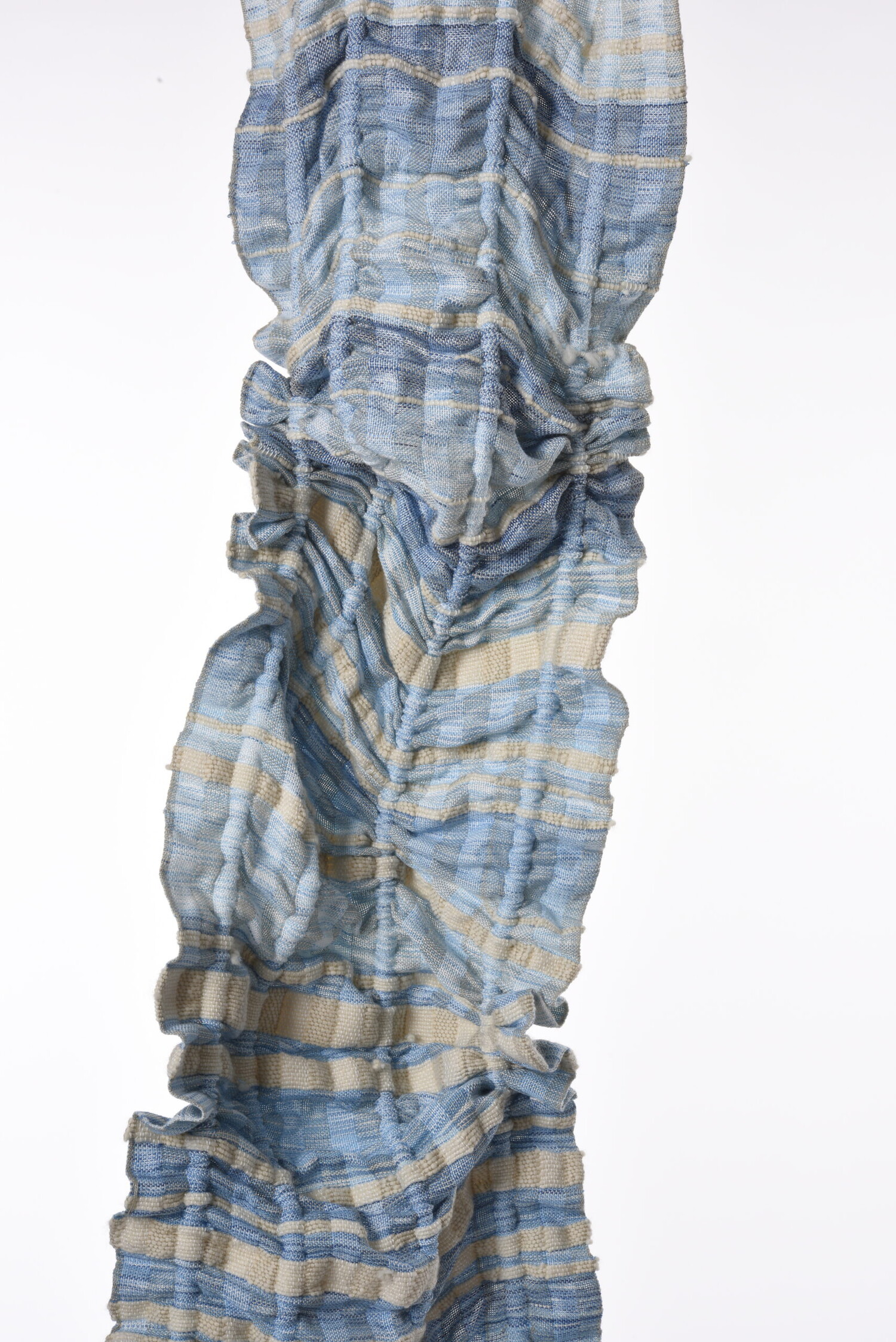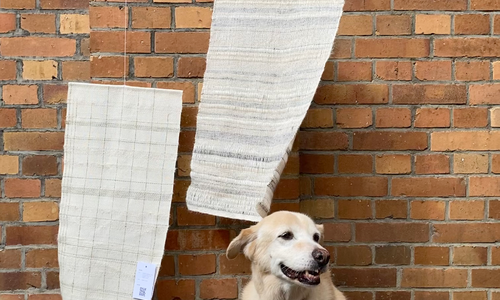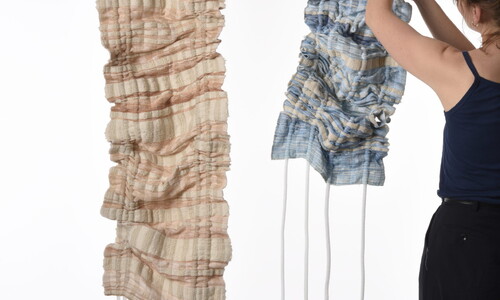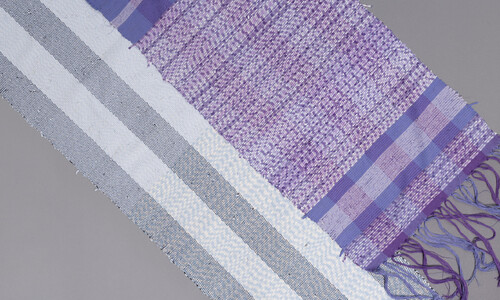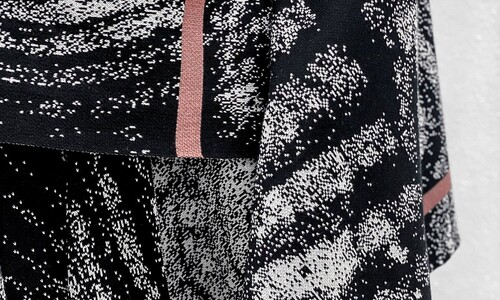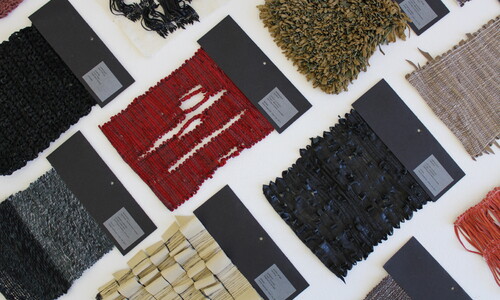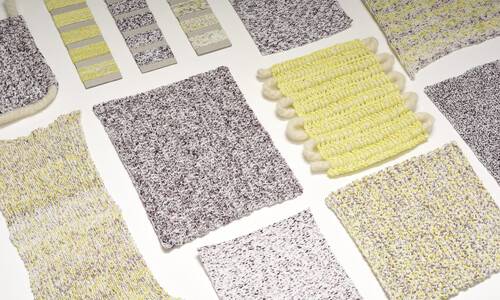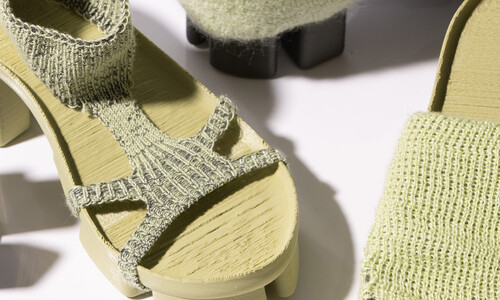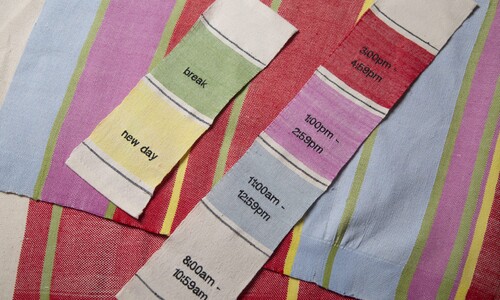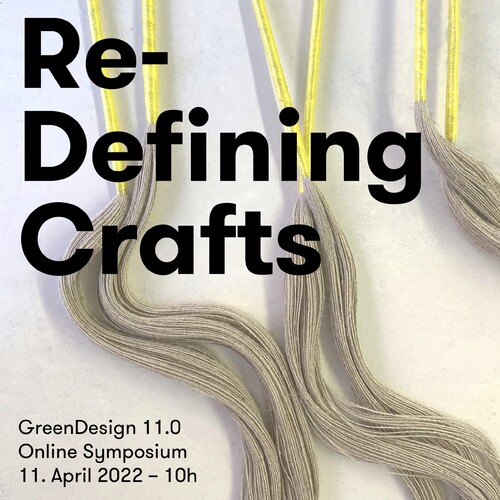Das Projekt untersucht und erweitert die Möglichkeiten, textile Oberflächen mit durch Tunnel geführten Schnüren zu bewegen und die textile Fläche durch Anziehen und Lockern der Seile in Länge, Breite und Form zu verändern. Mit dem entwickelten System lassen sich auch mehrere Einzelgewebe zu einer modularen beweglichen Struktur verbinden.
Ein anderer Aspekt des Projekts lag in der Frage, inwieweit die Aufteilung des Webprozesses auf zwei Personen im Gewebe selbst sichtbar wird. Kann man den Unterschied im Anschlag sehen? Wie verschieden fällt die vorher nichtfestgelegte Breite der weißen Wollstreifen aus und lässt sich an deren Rhythmus eine individuelle Handschrift erkennen? So wird der Fokus auf Varianzen gelegt, die sich auch aktualisieren, wenn das interaktive Raum-Objekt von verschiedenen Personen bewegt und verstellt wird, ohne jemals eine endgültige Form anzunehmen.
